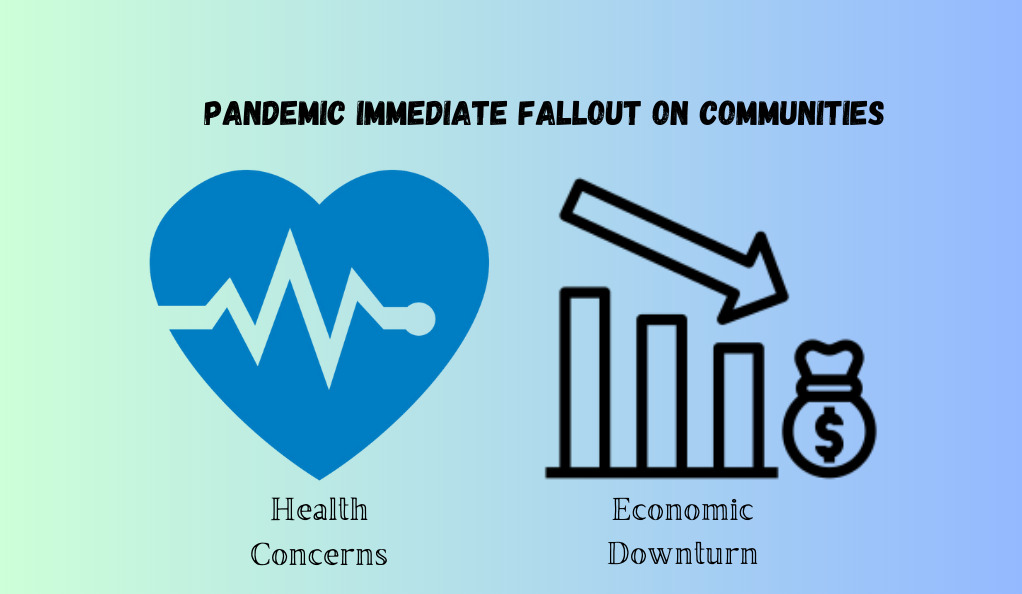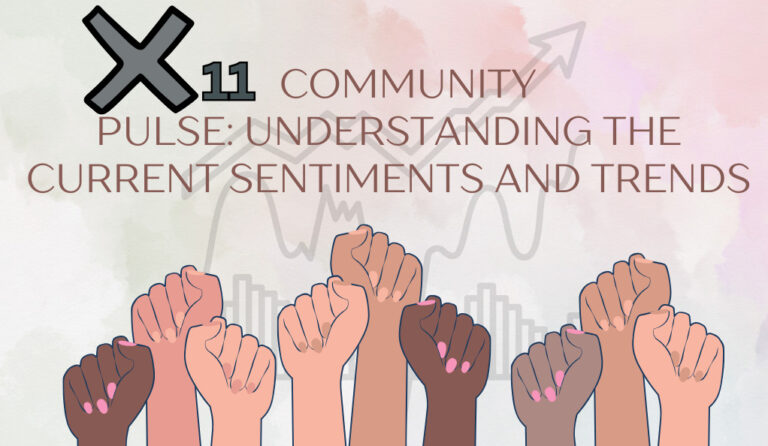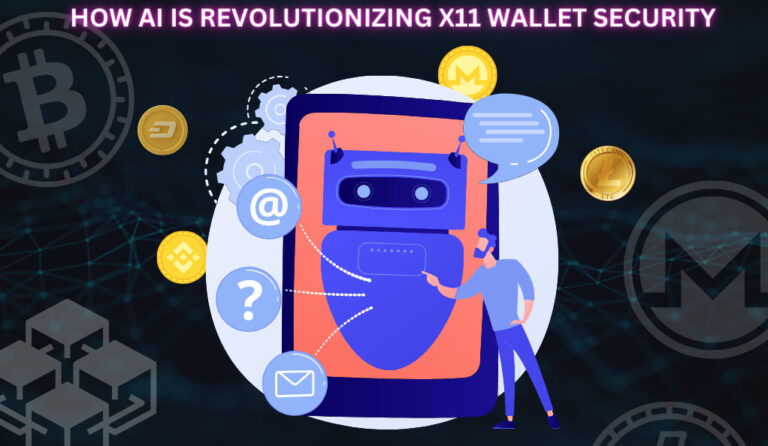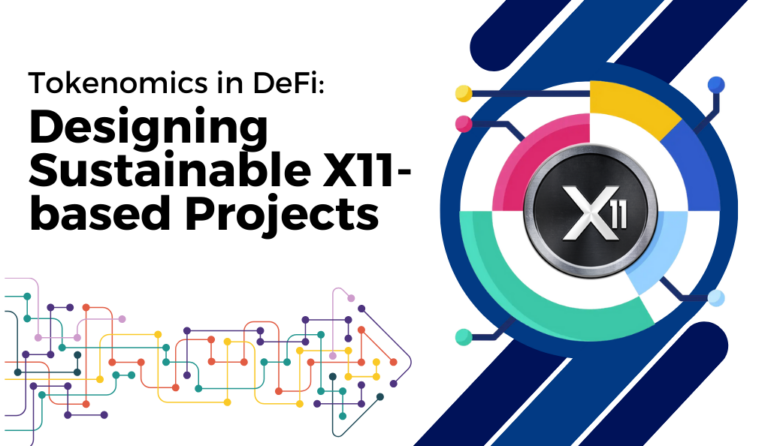Community development is a dynamic and multifaceted field that focuses on empowering individuals and groups within communities to create positive change. It is rooted in the principles of participation, empowerment, and social justice. This section offers a comprehensive introduction to community development, its origins, key principles, methodologies, and its significance in today’s world.
Historical Overview of Community Development
Community development, as a formal discipline, emerged in the mid-20th century, but its roots can be traced back to ancient civilizations where communities collaborated for mutual benefit. Over the decades, it has evolved, influenced by social, political, and economic changes.
| Era | Focus |
|---|---|
| Pre-20th Century | Local collaborations, mutual aid societies |
| 1950s-1960s | Formalization, influenced by decolonization and civil rights movements |
| 1970s-1980s | Emphasis on participatory approaches, grassroots movements |
| 1990s-Present | Integration of technology, focus on sustainability and global networks |
Key Principles Underpinning Community Development
- Empowerment: Enabling community members to take control of their circumstances and achieve their own goals.
- Participation: Ensuring all community members have a voice in the development process.
- Social Justice: Promoting fairness, equality, and access to resources and opportunities.
- Sustainability: Ensuring development efforts are long-lasting and environmentally conscious.
Methodologies in Community Development
Asset-Based Community Development (ABCD): Focuses on harnessing the strengths and assets within a community.
Participatory Rural Appraisal (PRA): Emphasizes local knowledge and enables local people to analyze their own realities.
Transformative Community Development: Focuses on systemic change, addressing underlying social and economic structures.
| Methodology | Focus | Key Feature |
|---|---|---|
| ABCD | Local strengths | Building on existing assets |
| PRA | Local knowledge | Grassroots analysis |
| Transformative | Systemic change | Addressing root causes |
The Role of Community Development in Modern Society
In today’s interconnected world, community development plays a pivotal role in:
- Addressing Inequalities: Bridging gaps in access to resources and opportunities.
- Promoting Sustainability: Ensuring development efforts are environmentally conscious and long-lasting.
- Fostering Innovation: Encouraging communities to find novel solutions to local challenges.
- Building Resilience: Preparing communities to face challenges, from economic downturns to global pandemics.
Challenges and Opportunities in Community Development
While community development offers numerous benefits, it also faces challenges such as limited resources, external interferences, and varying community dynamics. However, with challenges come opportunities for innovation, collaboration, and growth.
The Trust Factor in Community Development
Trust is the cornerstone of any successful community development initiative. It acts as the glue that binds community members together, fostering collaboration, mutual respect, and shared goals. Without trust, even the most well-intentioned development projects can falter. This section delves deep into the trust factor, exploring its significance, the challenges in building it, and strategies to cultivate and maintain it in community development.
Why Trust Matters in Community Development
Trust plays a pivotal role in:
Collaboration: Trust encourages community members to work together, pooling their resources and expertise.
Open Communication: With trust, individuals feel safe to express their opinions, share concerns, and provide feedback.
Conflict Resolution: Trust facilitates understanding and compromise, helping to resolve disputes amicably.
Long-term Commitment: Trust ensures that community members remain dedicated to shared goals over time.
Challenges in Building Trust
| Challenge | Description |
|---|---|
| Past Betrayals | Previous negative experiences can make community members wary of new initiatives. |
| Cultural Differences | Diverse communities may have varying notions of trust and ways of building it. |
| Lack of Transparency | Without clear communication, suspicions can arise, eroding trust. |
| External Interferences | Outside entities with different agendas can disrupt the trust-building process. |
Strategies to Cultivate Trust
- Open Dialogue: Regular community meetings where everyone has a voice can foster understanding.
- Transparency: Clearly communicate the goals, processes, and progress of development projects.
- Inclusivity: Ensure all community segments, especially marginalized groups, are represented.
- Consistent Actions: Actions speak louder than words. Consistently delivering on promises builds trust over time.
Maintaining Trust: A Continuous Effort
- Regular Check-ins: Periodic community meetings to discuss progress and address concerns.
- Feedback Mechanisms: Establish channels where community members can provide feedback anonymously.
- Celebrating Successes: Recognize and celebrate milestones achieved through collective effort.
Balancing Diverse Perspectives in Community Development
In the realm of community development, diversity is both a strength and a challenge. Communities are often composed of individuals from varied backgrounds, cultures, and experiences. While this diversity can bring a wealth of ideas and solutions, it also introduces the challenge of balancing these diverse perspectives. This section delves into the importance of recognizing and harmonizing these varied viewpoints to ensure inclusive and effective community development.

The Spectrum of Diversity in Communities
Communities are diverse tapestries woven from threads of different:
- Cultural Backgrounds: Encompassing traditions, languages, and histories.
- Socio-economic Statuses: Ranging from varied income levels to educational backgrounds.
- Generational Differences: From baby boomers to Gen Z, each brings unique perspectives.
- Lived Experiences: Personal experiences that shape individual worldviews.
Why Balancing Diverse Perspectives is Crucial
Richer Solutions: Diverse inputs lead to more comprehensive and innovative solutions.
Inclusivity: Ensuring all community members feel valued and heard.
Conflict Resolution: Understanding different viewpoints can lead to more effective conflict management.
Community Cohesion: A balanced approach fosters unity and a sense of belonging.
Challenges in Harmonizing Varied Viewpoints
| Challenge | Description |
|---|---|
| Communication Barriers | Differences in language, terminology, or communication styles can hinder understanding. |
| Cultural Misunderstandings | Unfamiliarity with cultural norms can lead to misconceptions. |
| Competing Interests | Different groups may have conflicting priorities or goals. |
| Historical Tensions | Past conflicts or prejudices can influence present interactions. |
Strategies for Effective Balance and Inclusion
- Open Dialogue: Create platforms for community members to share their perspectives openly.
- Cultural Sensitivity Training: Equip community leaders with the skills to understand and respect diverse cultures.
- Mediation and Conflict Resolution: Employ neutral parties to help navigate disagreements.
- Collaborative Decision-Making: Ensure decisions are made collectively, with input from all stakeholders.
Ethical Considerations in Community Development
Community development, while aimed at fostering positive change, is fraught with ethical dilemmas. These dilemmas arise from the inherent challenges of working with diverse groups, allocating limited resources, and navigating complex socio-political landscapes. This section delves into the ethical considerations that practitioners must be aware of and navigate to ensure that community development is both effective and morally sound.
Understanding Ethics in Community Development
Ethics refers to the moral principles that guide decision-making and behavior. In community development:
Respect for Autonomy: Recognizing and valuing the agency of community members.
Beneficence: Actively promoting the well-being of the community.
Non-Maleficence: Ensuring no harm is done, intentionally or unintentionally.
Justice: Ensuring fairness in decision-making and resource allocation.
Common Ethical Dilemmas in the Field
| Dilemma | Description |
|---|---|
| Resource Allocation | How to fairly distribute limited resources among various community needs? |
| Cultural Sensitivity vs. Universal Rights | Navigating practices that may be culturally accepted but violate universal human rights. |
| Transparency vs. Privacy | Balancing the need for openness with respecting individual and community privacy. |
| Short-term Needs vs. Long-term Sustainability | Addressing immediate concerns while ensuring long-term community viability. |
The Importance of Ethical Decision-Making
- Building Trust: Ethical practices foster trust among community members.
- Sustainability: Ethical decisions ensure long-term benefits and reduce potential future conflicts.
- Reputation: Upholding ethical standards enhances the reputation of the development initiative and its stakeholders.
- Legal and Social Compliance: Ensuring alignment with laws and societal expectations.
Guidelines and Best Practices
Stakeholder Engagement: Regularly consult with all community stakeholders to understand their perspectives.
Continuous Training: Equip community developers with ongoing ethical training and resources.
Ethical Review Boards: Establish boards to review and guide development initiatives.
Feedback Mechanisms: Create channels for community members to voice concerns or report unethical practices.
The Complexity of Inclusive Participation in Community Development
Inclusive participation is the bedrock of community development. It ensures that every voice, regardless of its origin or volume, is heard and valued. However, achieving genuine inclusive participation is complex, requiring more than just open invitations to community meetings. This section delves into the intricacies of ensuring inclusivity in community participation, highlighting its importance, challenges, and strategies to foster it.
Defining Inclusive Participation
Inclusive participation means ensuring that all community members, especially those from marginalized or underrepresented groups, have an equal opportunity to participate in decision-making processes. It encompasses:
- Representation: Ensuring diverse groups are present in discussions.
- Voice: Making sure these groups are heard and their opinions are valued.
- Influence: Ensuring these opinions shape the outcomes of the decision-making process.
The Significance of Inclusivity in Community Development
Holistic Development: Diverse inputs lead to more comprehensive solutions.
Community Cohesion: Inclusivity fosters unity and reduces feelings of alienation.
Sustainability: Decisions made with broad participation are more likely to have community buy-in and long-term support.
Social Justice: Inclusivity promotes fairness and equity, ensuring all community members benefit from development initiatives.
Challenges to Achieving Inclusive Participation
| Challenge | Description |
|---|---|
| Historical Marginalization | Groups historically excluded may be hesitant to participate. |
| Logistical Barriers | Physical, economic, or technological barriers can limit participation. |
| Cultural or Linguistic Differences | Language or cultural norms can hinder effective communication. |
| Power Dynamics | Dominant groups may unintentionally overshadow marginalized voices. |
Strategies to Foster Inclusivity
- Targeted Outreach: Proactively reach out to underrepresented groups to encourage participation.
- Accessible Platforms: Ensure meeting venues, times, and technologies are accessible to all.
- Cultural Sensitivity Training: Equip facilitators with skills to navigate cultural and linguistic differences.
- Feedback Mechanisms: Allow community members to share feedback on the inclusivity of participation processes.
Navigating Land Conflicts and Program Determination in Community Development
Land is more than just a physical entity; it’s a symbol of identity, heritage, and economic potential. In community development, land often becomes a focal point of contention, with multiple stakeholders laying claim or having varied visions for its use. Coupled with this is the challenge of determining the right programs that align with community needs and aspirations. This section delves into the intricacies of navigating land conflicts and the complexities of program determination in community development.
Understanding the Roots of Land Conflicts
Land conflicts often arise from:
- Historical Claims: Past ownership or ancestral ties to the land.
- Economic Interests: Visions of land use for economic gain, such as agriculture or real estate development.
- Cultural or Religious Significance: Land that holds spiritual or cultural value for certain groups.
- Legal Ambiguities: Unclear land titles or overlapping legal claims.
The Implications of Land Disputes in Community Development
Stalled Development: Disputes can halt development projects indefinitely.
Community Fragmentation: Conflicts can create or deepen divisions within the community.
Economic Implications: Uncertainty over land use can deter investors or lead to lost economic opportunities.
Legal Repercussions: Prolonged legal battles can drain community resources and energy.
Challenges in Program Determination
Determining the right programs for community development is complex, with challenges such as:
- Diverse Community Needs: Balancing varied aspirations and needs of different community segments.
- Resource Limitations: Allocating limited resources to the most impactful programs.
- External Influences: Navigating pressures from external entities or donors.
- Evolving Circumstances: Adapting to changing community dynamics or global events.
Strategies for Navigating Land Conflicts and Determining Programs
Community Dialogue: Facilitate open discussions to understand varied perspectives on land use.
Mediation: Employ neutral parties to help resolve land disputes amicably.
Participatory Planning: Engage the community in co-creating development programs.
Continuous Feedback: Establish mechanisms for community members to provide ongoing feedback on programs.
Adapting to Global Challenges: The COVID-19 Impact on Community Development
The COVID-19 pandemic, a global challenge of unprecedented scale, has left no community untouched. Its ramifications have been multifaceted, affecting health, economies, social structures, and more. Community development, inherently rooted in collaboration and on-ground initiatives, faced unique challenges and opportunities in this new landscape. This section delves into the profound impact of COVID-19 on community development, exploring the challenges, adaptations, and lessons for the future.

The Immediate Fallout of the Pandemic on Communities
- Health Concerns: Overwhelmed healthcare systems and the urgent need for medical infrastructure.
- Economic Downturn: Job losses, business closures, and economic stagnation.
- Social Disruptions: Physical distancing measures affecting community interactions and support systems.
- Educational Challenges: Closure of educational institutions and the shift to online learning.
Challenges Posed by COVID-19 to Community Development
Resource Diversion: Immediate needs, like healthcare and food security, diverting resources from long-term development projects.
Logistical Hurdles: Restrictions on movement hindering on-ground activities and community meetings.
Economic Constraints: Reduced funding and financial challenges affecting the continuity of development initiatives.
Mental Health Concerns: The psychological impact of the pandemic affecting community morale and participation.
Innovative Adaptations in the Face of Crisis
- Digital Transition: Leveraging technology for virtual community meetings, training sessions, and project monitoring.
- Localized Solutions: Empowering local community groups to address immediate needs, from makeshift healthcare centers to community kitchens.
- Collaborative Efforts: Partnering with NGOs, businesses, and governments for resource pooling and coordinated responses.
- Mental Health Initiatives: Introducing community support groups and helplines to address psychological challenges.
Lessons for Future Global Challenges
Flexibility: The importance of adaptable strategies and contingency plans in development projects.
Community Resilience: Building and nurturing resilience as a core component of community development.
Interconnectedness: Recognizing the global nature of challenges and the need for collaborative, cross-border solutions.
Preparedness: The value of proactive measures, from healthcare infrastructure to economic safety nets.
Overcoming Obstacles in Long-Term Community Development
Long-term community development is a marathon, not a sprint. While the vision is to achieve sustainable and lasting positive change, the journey is often riddled with obstacles. From shifting community dynamics to external economic pressures, these challenges require foresight, adaptability, and resilience. This section delves into the common obstacles faced in long-term community development and strategies to overcome them, ensuring that development efforts stand the test of time.
The Nature of Long-Term Community Development
Long-term community development focuses on:
- Sustainability: Ensuring initiatives have lasting positive impacts and are environmentally conscious.
- Capacity Building: Empowering communities to be self-reliant and self-sustaining.
- Legacy Creation: Leaving behind structures, systems, and mindsets that benefit future generations.
Common Obstacles in the Long-Term Development Journey
Shifting Community Dynamics: Changes in community leadership, demographics, or priorities over time.
Economic Pressures: Economic downturns, funding shortages, or changing market dynamics.
External Interferences: Political changes, regulatory shifts, or interventions by external entities.
Project Fatigue: Waning community interest or participation as projects stretch over years.
Strategies to Overcome These Obstacles
- Stakeholder Engagement: Regularly engage with all community stakeholders to stay aligned with evolving needs and priorities.
- Diversified Funding: Seek multiple funding sources to ensure financial stability.
- Adaptive Planning: Design projects with flexibility to adapt to changing circumstances.
- Continuous Training: Equip community members with skills and knowledge to navigate challenges and sustain momentum.
The Role of Continuous Evaluation and Adaptation
Feedback Mechanisms: Establish channels for community members to provide ongoing feedback.
Periodic Reviews: Conduct regular project evaluations to assess progress and identify areas of improvement.
Iterative Approach: Be prepared to refine strategies based on feedback and changing circumstances.
Celebrating Milestones: Recognize and celebrate interim successes to boost morale and maintain momentum.
Building Community Capacity vs. Providing Irrelevant Solutions in Community Development
At the heart of community development lies the principle of empowerment. However, a common pitfall in this field is the introduction of solutions that, while well-intentioned, may not align with the community’s actual needs or aspirations. This misalignment can stem from a top-down approach rather than building the community’s capacity to address its challenges. This section delves into the importance of capacity building and the dangers of imposing irrelevant solutions, offering insights into a more holistic and sustainable approach to community development.

Understanding Community Capacity Building
Community capacity building focuses on:
Empowerment: Equipping community members with the skills, knowledge, and resources to address their challenges.
Self-reliance: Reducing dependency on external entities and fostering a sense of ownership.
Sustainability: Ensuring that development initiatives continue to thrive beyond external interventions.
The Pitfalls of Providing Irrelevant Solutions
- Lack of Ownership: Solutions not rooted in community needs can lead to a lack of buy-in and participation.
- Wasted Resources: Misaligned initiatives can result in the inefficient use of funds, time, and effort.
- Short-lived Impact: Without community involvement, projects may not have lasting benefits or may even be abandoned.
- Eroded Trust: Imposing irrelevant solutions can erode trust between developers and the community.
The Importance of Ground-Up Approaches
Relevance: Solutions derived from community input are more likely to address actual needs.
Community Cohesion: Collaborative decision-making fosters unity and a sense of shared purpose.
Long-term Success: Community-driven projects tend to have greater longevity and impact.
Empowerment: Ground-up approaches nurture leadership and problem-solving skills within the community.
Strategies for Effective Capacity Building
- Active Listening: Engage in genuine dialogues to understand community aspirations and challenges.
- Skill-building Workshops: Offer training sessions tailored to the community’s needs.
- Resource Allocation: Provide tools, resources, and platforms that empower community-led initiatives.
- Feedback Mechanisms: Establish channels for continuous feedback and iterative improvement.
Conclusion
The journey of community development, with its highs and lows, serves as a poignant reminder of the power of human collaboration and the potential of collective action. By reflecting on challenges, championing community involvement, and adopting proactive strategies, we can ensure that the path forward is not just about overcoming obstacles but about realizing the shared dreams and aspirations of every community member.
At axerunners.com, our goal is to furnish well-rounded and trustworthy information regarding cryptocurrency, finance, trading, and stocks. Nonetheless, we avoid providing financial advice and instead encourage users to conduct their own research and meticulous verification.
Read More












+ There are no comments
Add yours